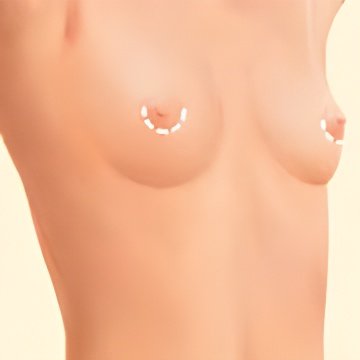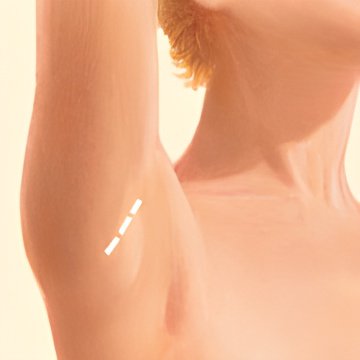cOSMETIC PROCEDURES > BREAST > BREAST AUGMENTATION
Enhance
breast augmentation
Breast augmentation is one of the most popular plastic surgery procedures today. It serves to enhance the breast volume, shape, symmetry, and improve overall breast proportion. Dr. Abedi personally conducts all consultations as she believes in crafting individualized surgical plans that precisely match each patient’s goals and anatomy.
What is Breast Augmentation?
Breast augmentation surgery involves using implants to increase the size of your breasts or restore breast volume that has been lost after weight reduction or pregnancy. Breast augmentation can:
Increase fullness and projection of your breasts.
Improve the balance of your figure.
Enhance your self-image and self-confidence.
Breast augmentation is a very personal procedure and you should do it for yourself, not for someone else. Breast augmentation is a good option if:
You are physically healthy
You have realistic expectations
Your breasts are fully developed
You are bothered by the feeling that your breasts are too small
You are dissatisfied with your breasts losing shape and volume after pregnancy, weight loss, or with aging
You are unhappy with the upper part of your breast appearing "empty"
Your breasts are asymmetrical
One or both breasts failed to develop normally or have an elongated shape (tuberous breast deformity)
What it won't do:
Breast augmentation does not correct severely drooping breasts. If you want your breasts to look fuller and to be lifted due to sagging, a breast lift may be required in conjunction with breast augmentation.
Breast lifting can often be done at the same time as your augmentation or may require a separate operation. Dr. Abedi can advise you at the time of consultation if a breast lift is required.
Consultation and Preparing for Surgery
-
Why you want the surgery, your expectations, and the desired outcome
Medical conditions, drug allergies, and previous medical treatments
Current medications, vitamins, herbal supplements, alcohol, tobacco, and drug use
Family history of breast cancer and results of any mammograms or previous biopsies
-
Evaluate your general health status and any pre-existing health conditions or risk factors
Examine and measure your breasts, including detailed measurements of their size and shape, skin quality, and placement of your nipples and areolas
Take photographs
Discuss your options and recommend a course of treatment
Discuss likely outcomes of breast augmentation and any risks or potential complications
-
Get a blood test
Take certain medications or adjust your current medications
Stop smoking
Avoid taking aspirin and certain anti-inflammatory drugs as they can increase bleeding
Augmentation Options
Implant choices
Saline implants
Saline implants are filled with sterile salt water. Should the implant shell leak, a saline implant will collapse and the saline will be absorbed and naturally expelled by the body. They provide a uniform shape, firmness and feel. Saline implants are FDA-approved for augmentation in women age 18 or older.
Silicone implants are filled with silicone gel
The gel feels a bit more like natural breast tissue. Cohesive gel implants refer to the newest generation of silicone implants. These implants are filled with a silicone gel with increased cross-links between gel molecules. This results in the silicone maintaining its shape more effectively than previous generations of silicone implants which were much more liquid in terms of consistency. If the implant leaks, the gel may therefore remain within the implant shell, or may escape into the breast implant pocket. A leaking implant filled with silicone gel will not collapse. If you choose these implants, you may need to visit your plastic surgeon regularly to make sure the implants are functioning properly. An ultrasound or MRI screening can assess the condition of breast implants. Silicone implants are FDA-approved for augmentation in women aged 22 or older.
Surface Texture
Smooth breast implants
Smooth breast implantsare the softest feeling. These implants can move with the breast implant pocket, which may give more natural movement. These implants may have some palpable or visible rippling.
Textured breast implants
Textured breast implants develop scar tissue to stick to the implant, making them less likely to move around inside of the breast and get repositioned.
Texturing offers some advantage in diminishing the risk of a tight scar capsule. However due to a very low risk of ALCL (anaplastic large cell lymphoma, a rare type of cancer) with these implants, Dr. Abedi does not offer this type of implant.
Other options
Fat Grafting
A fat transfer breast augmentation essentially uses liposuction to take fat from other parts of your body and inject it into your breasts. This is an option for women who are looking for a relatively small increase in breast size and would prefer natural results. Risks include cysts, infection, microcalcification, necrosis (death) of fat cells and the possibility that some of the transferred fat cells will leave the breast area.
While implant-based breast augmentation remains the most common method for increasing breast volume and enhancing overall shape, there has been recent technological advancement in transferring fat from other areas of the body to the breasts. Typically, fat is extracted (via liposuction) from regions such as the abdomen, flanks, hips, thighs, and/or buttocks. This fat is then processed and is injected into the breasts. Depending on the desired augmentation level, multiple fat grafting sessions may be necessary. Fat grafting on its own cannot significantly increase the size of the breasts. However, it can make breasts appear fuller. Breast fat grafting is often a desirable choice for women hoping to enhance their breast volume without using implants.
Dr. Abedi will take into account your wishes and concerns and will choose the right breast augmentation option for you.
Implant manufacturers occasionally introduce new styles and types of implants, so there may be additional options available. Whether you choose saline or silicone implants, it is important for you to monitor your breast implants and follow-up with Dr. Abedi when you have any concerns.
The Procedure
STEP 1: Anesthesia
Medications are administered for your comfort during the surgical procedure. Your anesthesiologist will make recommendations on the type of anesthesia based on your history and general health.
Step 2: The Incision
Incisions are made in inconspicuous areas to minimize visible scarring. Dr. Abedi will discuss which incision options are appropriate for your desired outcome. Incision options include:
Periareolar Incision
Inflamammary Incision
Transaxillary Incision
STEP 3: Inserting and placing the implant
After the incision is made, a breast implant is inserted into a pocket either:
A. Under the pectoral muscle (a submuscular or subpectoral placement), or
B. Directly behind the breast tissue, over the pectoral muscle (a submammary/subglandular placement)
C. Beneath the pectoralis major muscle fascia, which is a layer of tissue covering the muscle (Subfascial placement)
The method for inserting and positioning implants depends on the type of implant, degree of enlargement desired, your body type and breast shape and consistency.
STEP 4: Closing the incisions
Incisions are closed with layered sutures in the breast tissue and layered absorbable sutures in the skin.
STEP 5: See the results
The results of breast augmentation are immediately visible. Over time, post-surgical swelling will resolve and incision lines will fade. It is common for the breast implants to sit high immediately after the surgery, specially when placed under the muscle. The implants often take up to 6 weeks to settle in their new pocket.
risks and safety
The decision to have breast augmentation surgery is extremely personal and you'll have to decide if the benefits will achieve your goals and if the risks and potential complications are acceptable. Dr. Abedi will explain in detail the risks associated with this surgery. You will be asked to sign consent forms to ensure that you fully understand the procedure and any risks and potential complications.
Possible risks include:
Anesthesia risks
Bleeding or hematoma. This may require repeat urgent surgery
Infection
Changes in nipple or breast sensation
Poor scarring of skin
Wrong or faulty position of the implant
Dissatisfaction with implant size
Implant leakage or rupture
The formation of tight scar tissue around the implant (capsular contracture)
Fluid accumulation (seroma)
Wrinkling of the skin over the implant
Sagging of skin over the implant
Pain, which may persist
Possibility of revisional surgery. Higher in cases when skin is more saggy
Future breastfeeding can be affected
The development of a type of cancer of the immune system called Breast Implant- Associated Anaplastic Large Cell Lymphoma (BIA-ALCL). This is a very rare form of cancer associated mainly with textured breast implants, which Dr. Abedi does not use
Breast implants may be associated with systemic symptoms commonly referred to as breast implant illness (BII) which can include fatigue, "brain fog," muscle or joint pain and rash.
These risks and others will be fully discussed prior to your consent. It is important that you address all your questions directly with Dr. Abedi
Other important considerations:
Breast implants are not guaranteed to last a lifetime and future surgery may be required to replace one or both implants
Pregnancy, weight loss and menopause may influence the appearance of augmented breasts over the course of your lifetime
Breast augmentation requires regular examinations of your breasts' health and to evaluate the condition of your implants
If you have any concerns with your breast implant health, please reach out to Dr. Abedi
RECOVERY AFTER SURGERY
After surgery you will be taken into a recovery area to be closely monitored. Your breasts will be wrapped in gauze dressings and a support bra to minimize swelling and support the breasts as they heal.
Before leaving the surgical facility, you will be given specific instructions by Dr. Abedi that includes how to care for your breasts following surgery, medications to apply or take orally to aid healing and reduce the risk of infection, and when to follow-up with Dr. Abedi. You will be instructed to wear a support bra around the clock for the first 4 - 6 weeks depending on your healing. There are tapes on your incision which stay on for 2 weeks or until they fall. You will be instructed to continue taping your incisions for the first 3 months to optimize the appearance of your scars.
After a post-surgical recovery period of 24 to 48 hours and an additional reduced-activity period of a few days, you will likely experience soreness and swelling for a few weeks. Exercise and normal activity can resume at 2-4 weeks depending on your recovery. Dr. Abedi will let you know at your post op visit when you can resume normal activities.
results
The results of breast augmentation are immediately visible. Over time, post-surgical swelling will subside and incision lines will fade. Satisfaction with your new image should continue to grow as you fully recover from surgery. In order to achieve optimal results, it is important that you follow Dr. Abedi’s post-operative instructions and return for follow-up visits.
It's important to know that breast implants are not designed to last a lifetime. Your implants may need to be replaced. If you notice any changes in your breasts or symptoms such as pain or swelling, please reach out to Dr. Abedi for an assessment.
Over time, your breasts can change due to aging, weight fluctuations, hormonal factors and gravity. If, after a period of years, you become dissatisfied with the appearance of your breasts, you may choose to undergo a breast lift or implant exchange to restore a more youthful contour.
Prices for breast augmentation can vary. Dr. Abedi offers patient financing plans through Beautifi, so be sure to ask.
Cost may include:
Anesthesia fees
Surgical facility costs
Medical tests
Post-surgery garments
Prescriptions for medication
Surgeon's fee
Follow-up visits for up to 6 months
Medical services plan does not cover cost of breast augmentation except if used for the purpose of breast reconstruction in cases of severe asymmetry, congenital tuberous breast deformity, or breast cancer reconstruction.
Please contact our office to obtain a quote if you are interested in this procedure.
cost

get in touch with us
Your vision,
our expertise.
Discover your Beauty.
Contact us today to schedule your consultation.








